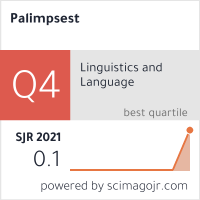HOW “MODERN” IS THE MODERN PLAIN ENGLISH MOVEMENT? – AN OVERVIEW OF RELEVANT LEGISLATIVE AND EXECUTIVE POLICY INITIATIVES IN THE UNITED STATES FROM THE 19TH CENTURY
DOI:
https://doi.org/10.46763/PALIM21612047cAbstract
The official beginnings of the modern history of the Plain English movement are usually associated with the 1960s and the 1970s, when federal employees, legal experts and consumer rights advocates started to promote language use more transparent and understandable for the general public. Among the presidents of the United States, it was Richard Nixon and Jimmy Carter who issued the first Executive Orders to simplify federal regulations. Although Republican presidents were generally unsupportive of the idea, by 2010 the Plain Writing Act mandated the use of “clear Government communication that the public can understand and use” (P.L. 111-274, Sec. 2). Regardless of the fact that the roots of Plain English may be traced back to Geoffrey Chaucer himself (Cutts, 2013, p. xxvii), pre-20th century official initiatives are barely discussed in the relevant literature. In order to contribute to the filling of this hiatus, the present paper examines the relevant legislative and executive proposals in the U.S. before 1875, arguing that the 1850s and 1860s have been a particularly neglected period in scholarship from the Plain English perspective, although the harbingers of future policies had actually been conceived well before the Civil War.
Keywords: language policy; United States; Plain English; 19th century.


